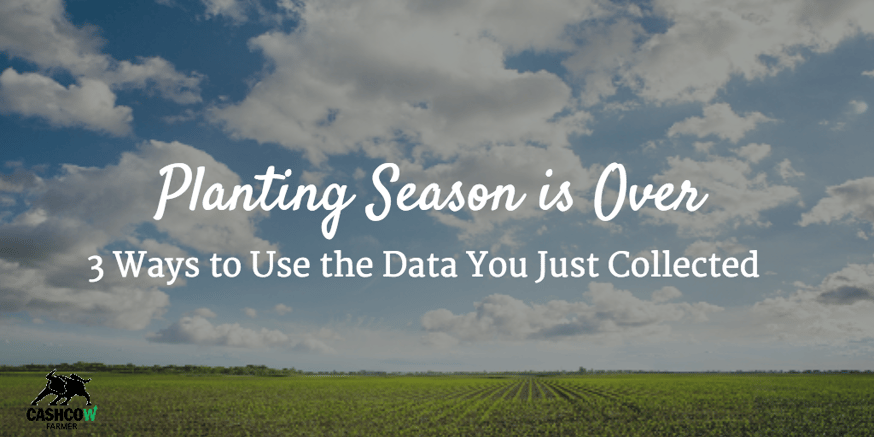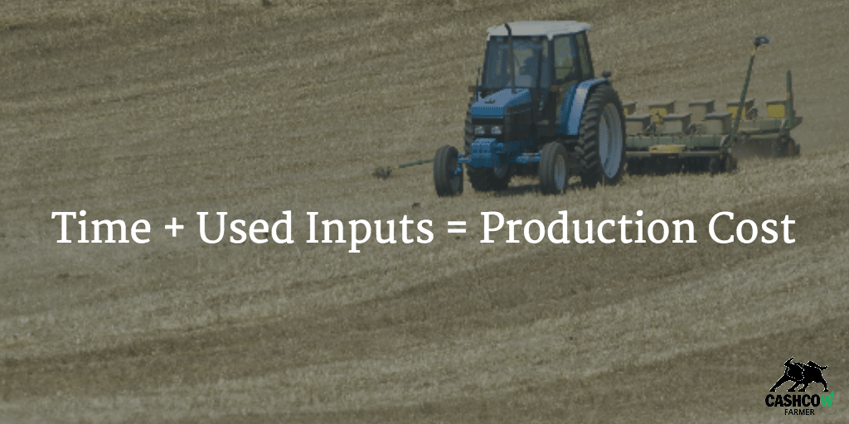
Planting is the most important part of the farming process.
And with the passing of June 10, planting season is now over for much of the Corn Belt. It was a brutal time, battling Mother Nature. In my area, we even went from drought warnings to flood warnings in a week’s time.
All that pushing---it’s temporarily over. But now you’re looking back to figure out what just happened. Which seeds did you plant where? How do you make sense of it all?
You have a heap of data from planting season: from your tractor, field notes, and so on.
But most farmers only use that data to track the plant date and planted acres of each field. You might not know that what you do with your data makes a tremendous impact on your entire operation.
Follow the three steps below and turn your planting data into valuable insights that will make you more efficient (and profitable) during your next planting season.
1) Measure Your Efficiencies
How many acres did you plant every day, on average? What was the most (and the least) you achieved in a day?
When you look at these metrics, you can start to identify what caused your low-production days.
For example: On a day that you only planted 200 acres (when your average is 500 acres), it might have been because you were scrambling around for seeds or parts you didn’t have on hand. If that’s the case, then you weren’t adequately prepared for planting season.
So when the next planting season rolls around, you’ve made a mental note to stock up on the resources that you scrambled for last season. Without measuring your data, you’d never know to make this adjustment for the next season.
People may think it’s a waste to go back through all their data from planting season and draw conclusions. But in this day and age, the “Wal-Mart” farmers, meaning the low-cost farmers, are the ones that survive.
Think about it: Wal-Mart moves into town and drives down all the prices, putting local stores out of business. It’s the same in farming: the farmers who track and measure everything produce at a lower cost than old-fashioned farmers who don’t.
Measure your efficiencies, and you won’t have to worry about getting shoved out of the way.
2) Record Your Actual Planting Production Cost
If you’re like me, you have an estimate of what you’re going to plant on every field.
But estimates only go so far. Your actual production costs will help you make key decisions.

Production costs = time it takes to farm the field + used inputs
1: Time it takes to farm the fieldWhen it comes to time spent, the size of a field means very little; the shape is much more important.
To measure efficiency, look at your planting coverage map. Are you planting in a perfect square or does your field look like swiss cheese because of all the wet spots?
It’s like mowing the lawn: when you’ve got a bunch of trees in your yard, you have to put a headland around each tree which can take a lot of extra time to mow. Productivity is extremely important!
After looking at your data, if you see that one field took an entire day to farm...you may be better off custom hiring someone to farm it. They’re going to charge you by the acre, not by time.
If hiring someone isn’t an option, then find another source of production: if you rent it, stop renting. If you own it, make it a pasture or square it with CRP.
2: Used inputs
If that field that looks like swiss cheese, there’s a good chance you’re planting seed on ground that you’ve already planted. You’re putting valuable inputs on top of other seed, and it’s a major inefficiency.
But there’s a solution: invest in sectional control.
Technology like Precision Planting’s RowFlow will map the ground you’ve already planted. RowFlow keeps your tractor from spreading inputs on ground that’s already been planted, ultimately saving you a lot of money on seed and fertilizer.
Put #1 and #2 together, and you’ll have your actual production cost.
Cash Cow Farmer makes it easy to input your planting data. The tool allows you to easily see the entire season’s production costs (down to the penny) at a glance on each individual field, each crop and the whole farm.
3) Determine Your Harvest Plan
Every seed has a maturity date. There are long-season and short-season corn varieties. Since they’re so different, you can’t harvest them effectively without a plan.
Most farmers will plant 3-6 varieties. So it’s important that they harvest the shorter date corn first.
Let’s look at the farmer who hires out his labor. If his workers don’t know the seeds’ maturity dates, they may harvest one crop that’s ready and move on to another that isn’t. All the while, they may miss another crop that’s now over-dry because it passed maturity.
Farmers need to explain the harvest plan to every worker; and to explain a harvest plan, you have to have one. (Click to Tweet)
Cash Cow stores data for the farmer, so the farmer can see what seeds they planted on every field and when. With this data at your fingertips, you can easily create a harvest plan.
Conclusion
Planting season is like taking the SAT standardized test. It’s tempting to pay all your attention to the grade, but if you don’t look at the questions you got wrong, how will you improve?
Take time to measure your efficiency, and adjust your operation accordingly. We love Benjamin Franklin’s quote: “If you fail to plan, you’re planning to fail.” (Click to Tweet)
You invested a lot of your time during planting season, so why not learn from it?
Start your free trial of Cash Cow Farmer today, and start using your planting data to make your farming operation more efficient.
Top Trending Reads:




